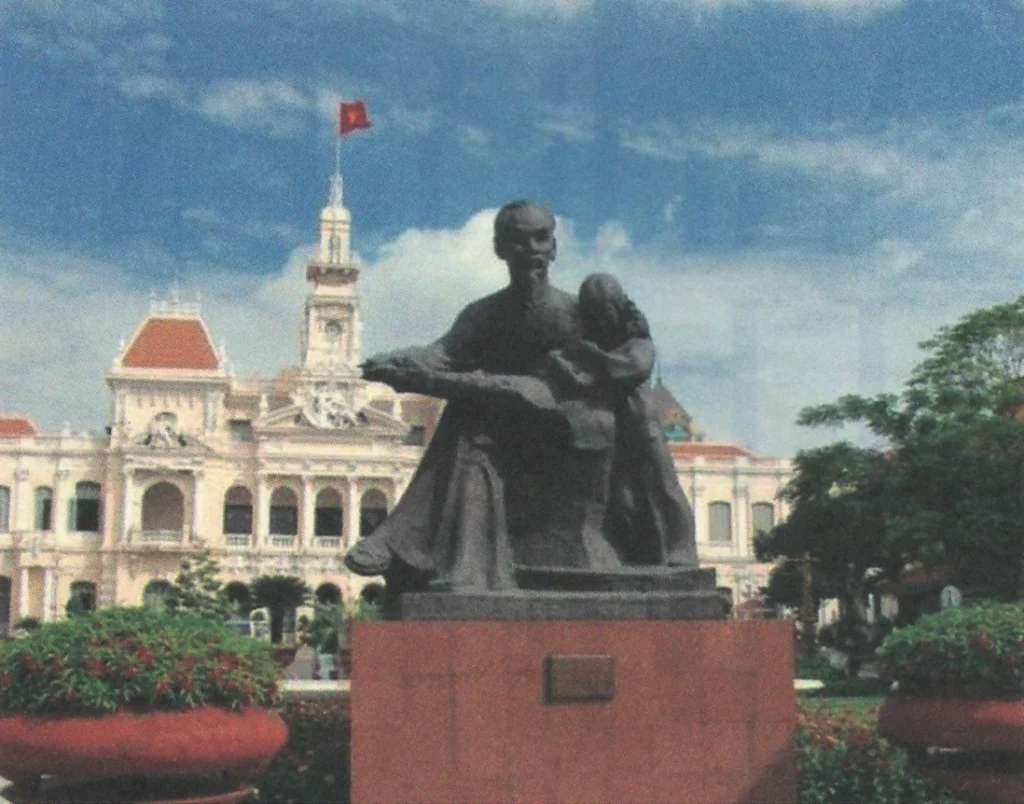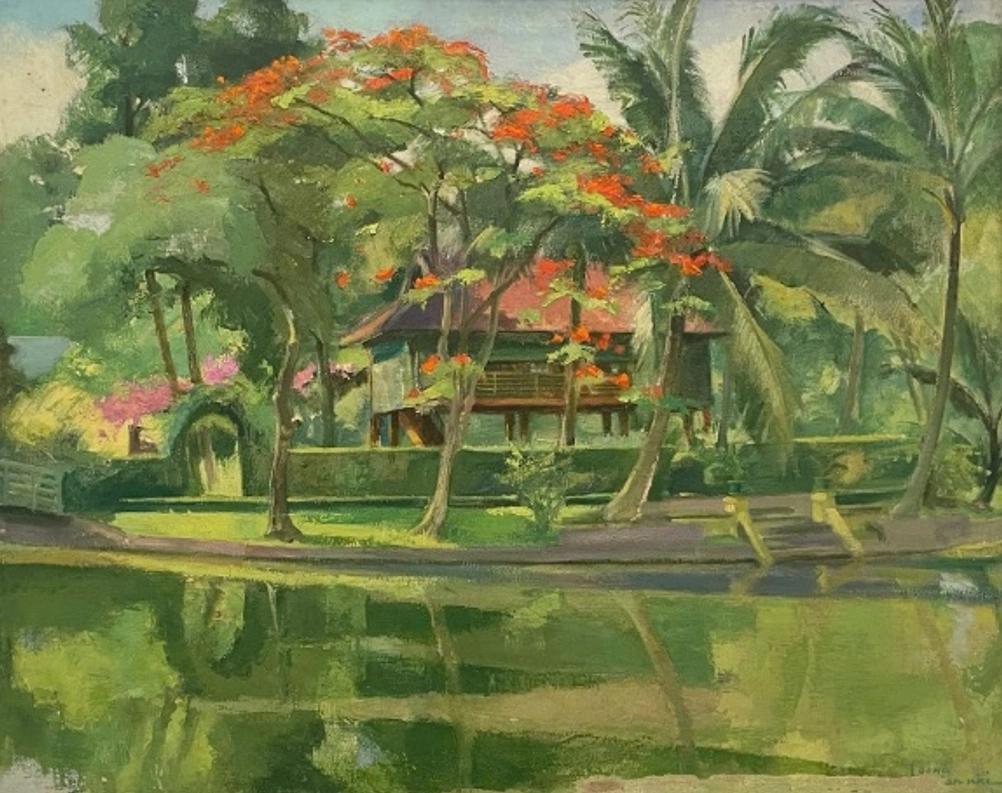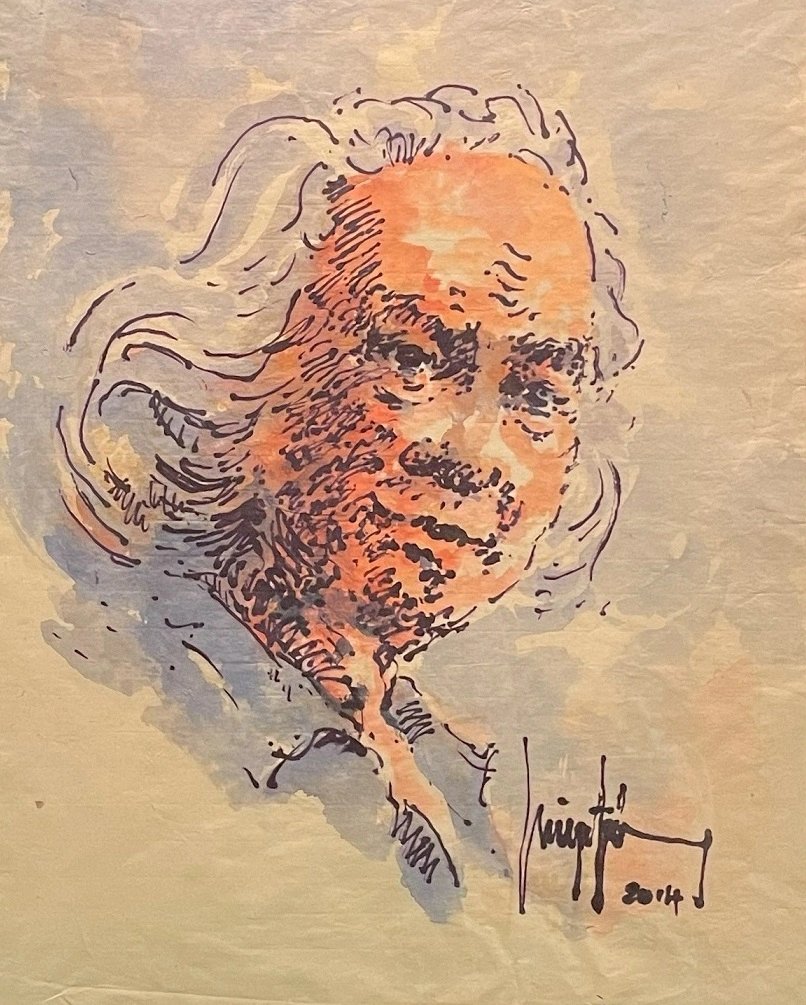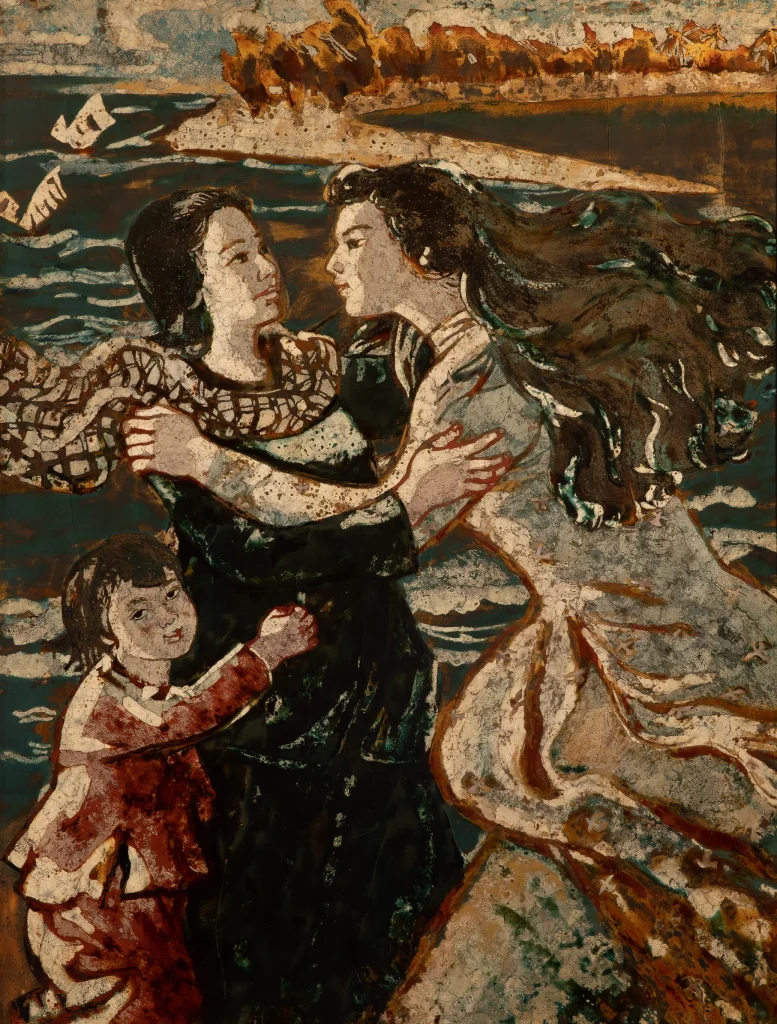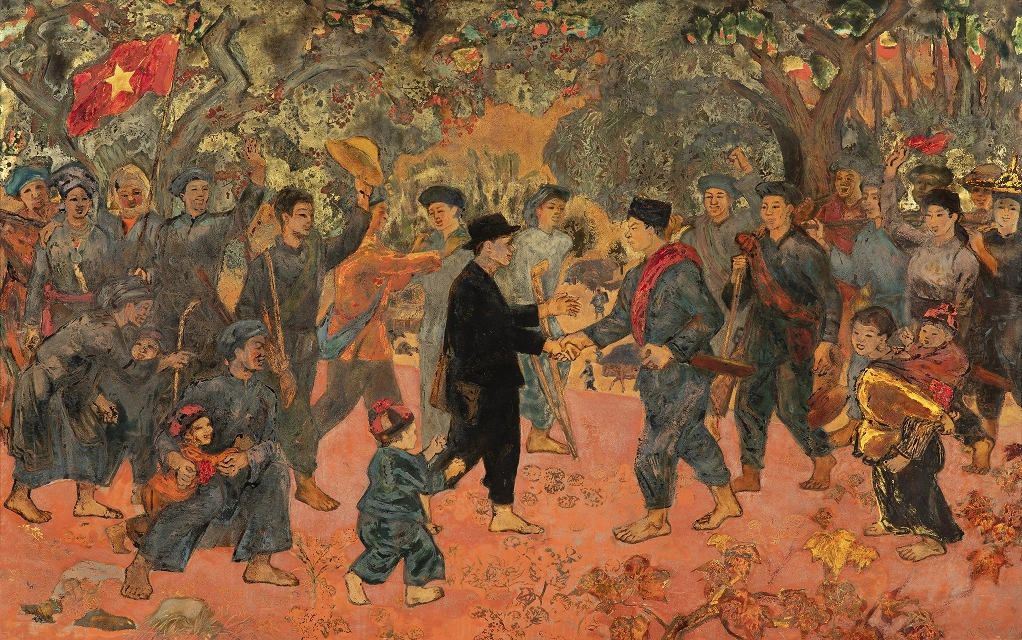Nguyễn Sáng and the clause of revolution
When mentioning Nguyễn Sáng, art lovers will immediately remember his monumental works in both scale and subject; remember his creative innovations; his personal imprints of a natural talent for painting; a passionate and determined personality from art to life.
Nguyễn Sáng is a model of “a typical artist with the highest commitment to artistic goals, always present in him is a struggle between the intention of innovation and a deep understanding of the subject” (according to the book “Dictionary of Fine Arts”, Fine Arts Publishing House, 2007).
In fact, Nguyễn Sáng’s artistic legacy is closely linked to the tradition and history of the nation. He is a painter of revolutionary epics. In each historical satge of the country, he left behind symbolic artistic marks. In 1954, he created “The enemy burned my village”, oil painting; in 1963, “Joining the Party in Điện Biên Phủ”, lacquer painting; in 1967-1978, “The Bronze Wall of the Fatherland”, lacquer painting… These works deeply moved any generation because of their dense artistic content, professional skills, and delicately expressive characters, deeply expressing the will and aspiration for independence of an indomitable nation.
With two great works representing two struggles for national liberation: “Joining the Party in Điện Biên Phủ” – against the French; “The Bronze Wall of the Fatherland” – against the Americans… He is the only artist in Việt Nam to have two works selected as national treasures out of a total of seven paintings in the country.
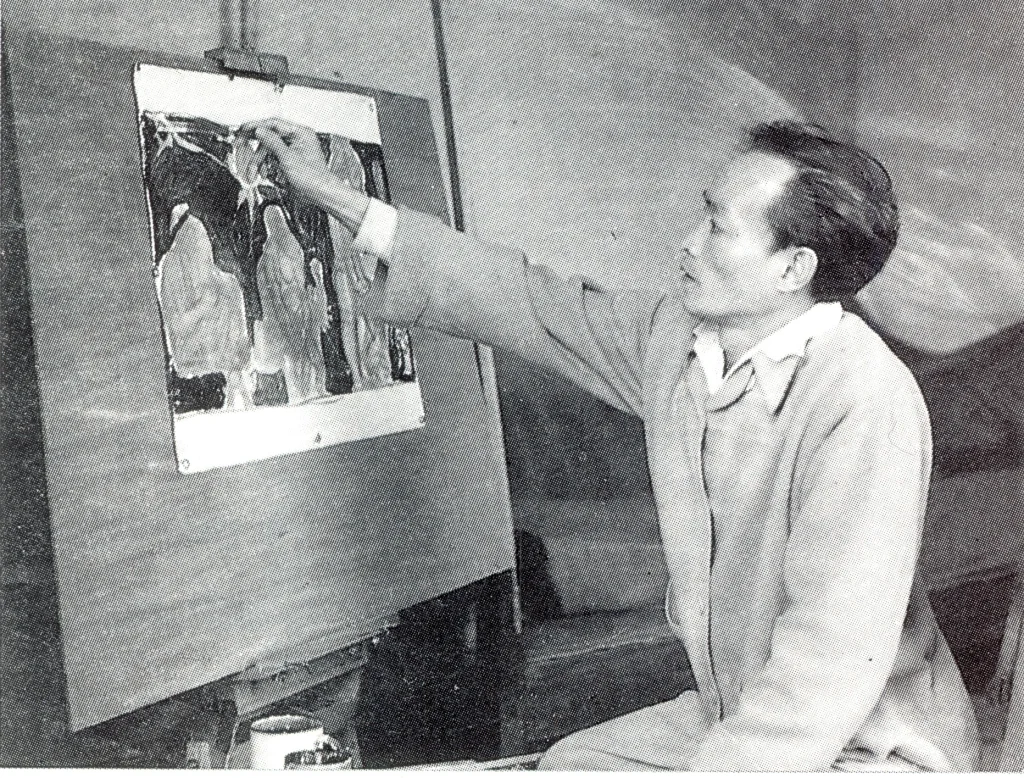
NGUYỄN SÁNG PAINTING
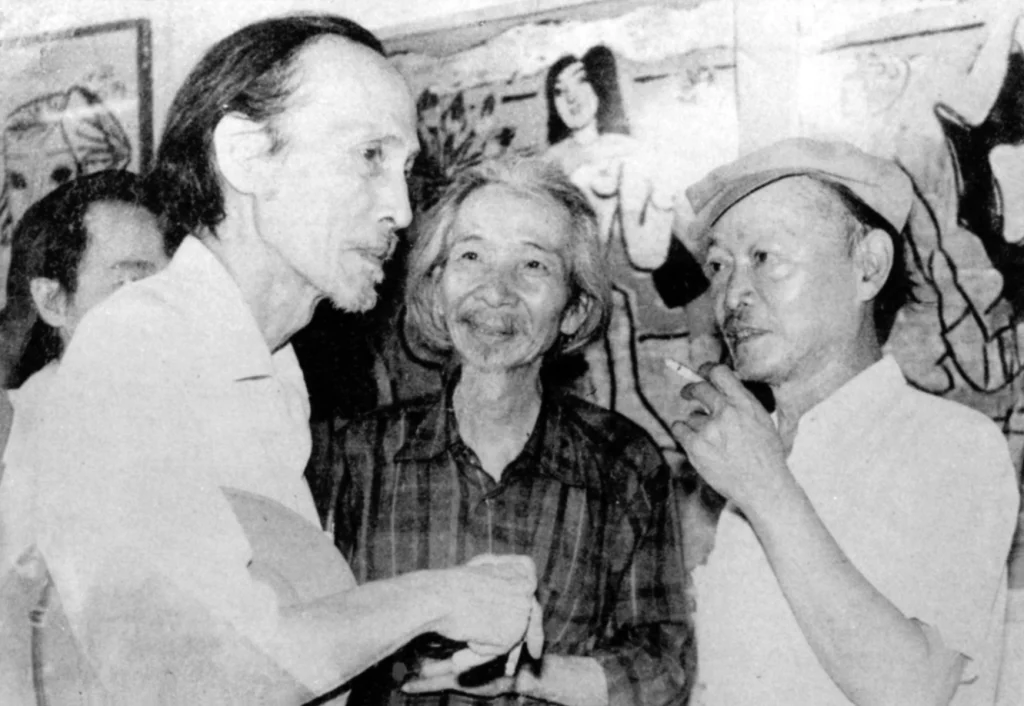
NGUYỄN SÁNG WITH ARTISTS
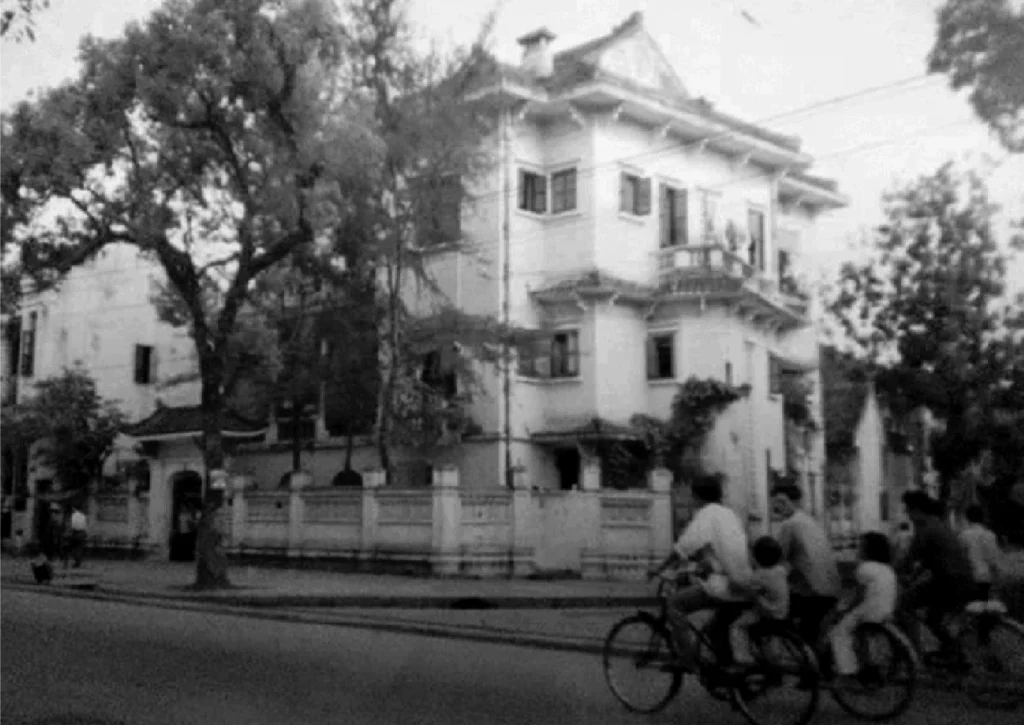
ONCE KNOWN AS THE “HOUSE OF CELEBRITIES”, THE VILLA AT 65 NGUYỄN THÁI HỌC AFTER THE LIBERATION OF THE CAPITAL BECAME THE OFFICE OF
VIỆT NAM FINE ARTS ASSOCIATION, LATER BECAME THE RESIDENCE OF ARTISTS SUCH AS PAINTERS NGUYỄN PHAN CHÁNH, NGUYỄN SÁNG,
NGUYỄN TƯ NGHIÊM, TRẦN ĐÔNG LƯƠNG MAI VĂN HIẾN, VĂN GIÁO, SCULPTORS SONG VĂN, HUỲNH VĂN GẤM
NGUYỄN VĂN LÝ, MUSICIAN ĐỖ NHUẬN, WRITER NGUYỄN ĐÌNH THI, VŨ TÚ NAM…
Nguyễn Sáng is a son of the South, carrying within him a strong national bloodline. Therefore, the milestone of April 30, 1975 is an important topic, which he nurtured ideas for, and prepared to create works of great stature. In 1980, on the occasion of the 5th anniversary of the Liberation of the South and the Reunification of the country, he completed two large lacquer paintings “Unification” and “Dancing around” with the spirit of gratitude – gratitude to the homeland and country.
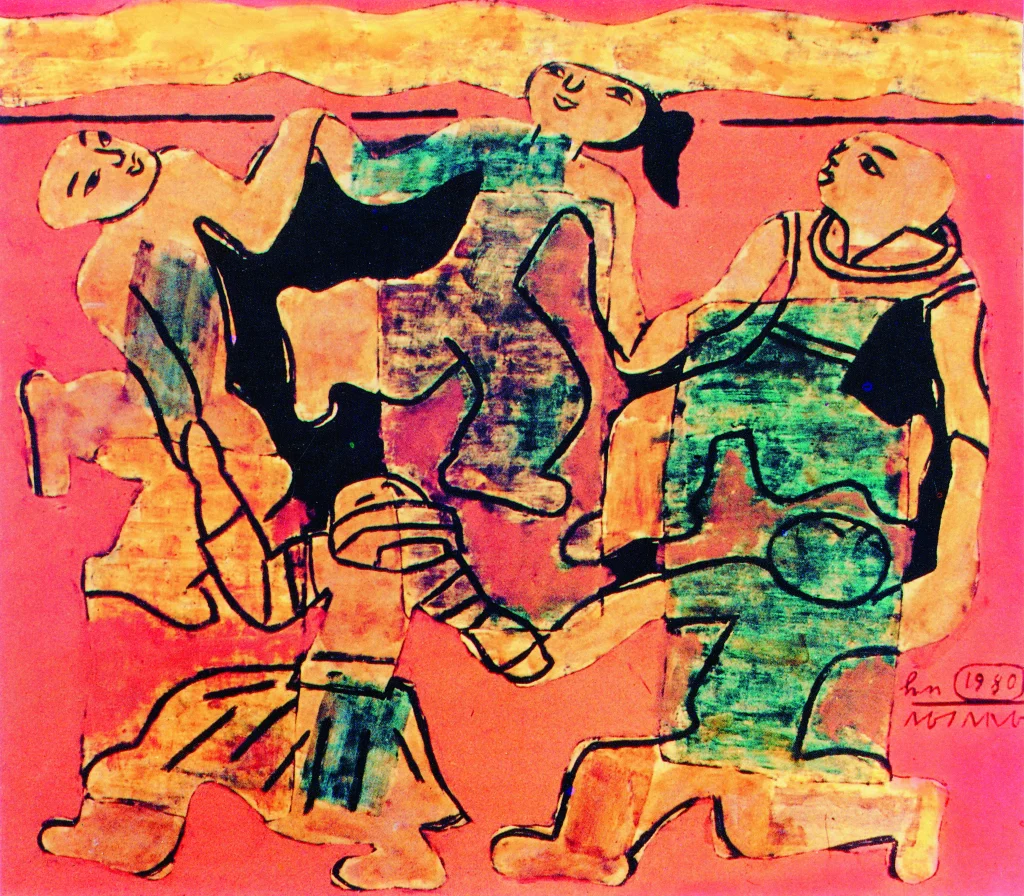
NGUYỄN SÁNG (1923-1988). DANCING AROUND. 1980. LACQUER. 80X100CM. CURRENTLY IN THE COLLECTION OF DEPARTMENT OF FINE ARTS,
PHOTOGRAPHY AND EXHIBITIONS. PHOTO OF THE WORK USED FROM THE BOOK “NGUYỄN SÁNG”
AUTHOR QUANG VIỆT, FINE ARTS PUBLISHING HOUSE, 2017, PHOTO: LÊ VƯỢNG
About the painting “Unification”
The most attractive and important part for researchers, critics, and art lovers is the reading part of the work, especially Nguyễn Sáng’s.
Basically, Nguyễn Sáng built the work ‘Unification’ with a clear message based on a realistic interpretation. The painting depicts three characters in Nguyễn Sáng’s typical style. Based on the descriptive details, it can be guessed that the young woman is using both hands, solemnly handing over a bouquet of lotus flowers – representing the people of the North, with a congratulatory attitude. The remaining young woman – representing the people of the South, with the attitude of a recipient, receiving flowers; one hand holds the flowers, the other hand is still holding a red rose symbolizing love, gratitude, and appreciation. The child character – only has a stylised shape and lines, shaped in the style of Northern folk sculpture, simulating motifs on columns and rafters in ancient religious architecture. This character stands in the center, with both hands raised high above his head as if supporting a bouquet of lotus flowers – symbolizing the future generation – receiving, preserving peace and developing the country. On the background (sky) is a yellow strip arranged across the painting; it could be either a cloud or a mountain range. In addition to the intention of balancing the composition, it also has a decorative effect. Perhaps the artist wants to highlight the important theme symbolizing unity – the mountains and rivers of Việt Nam are connected in one.
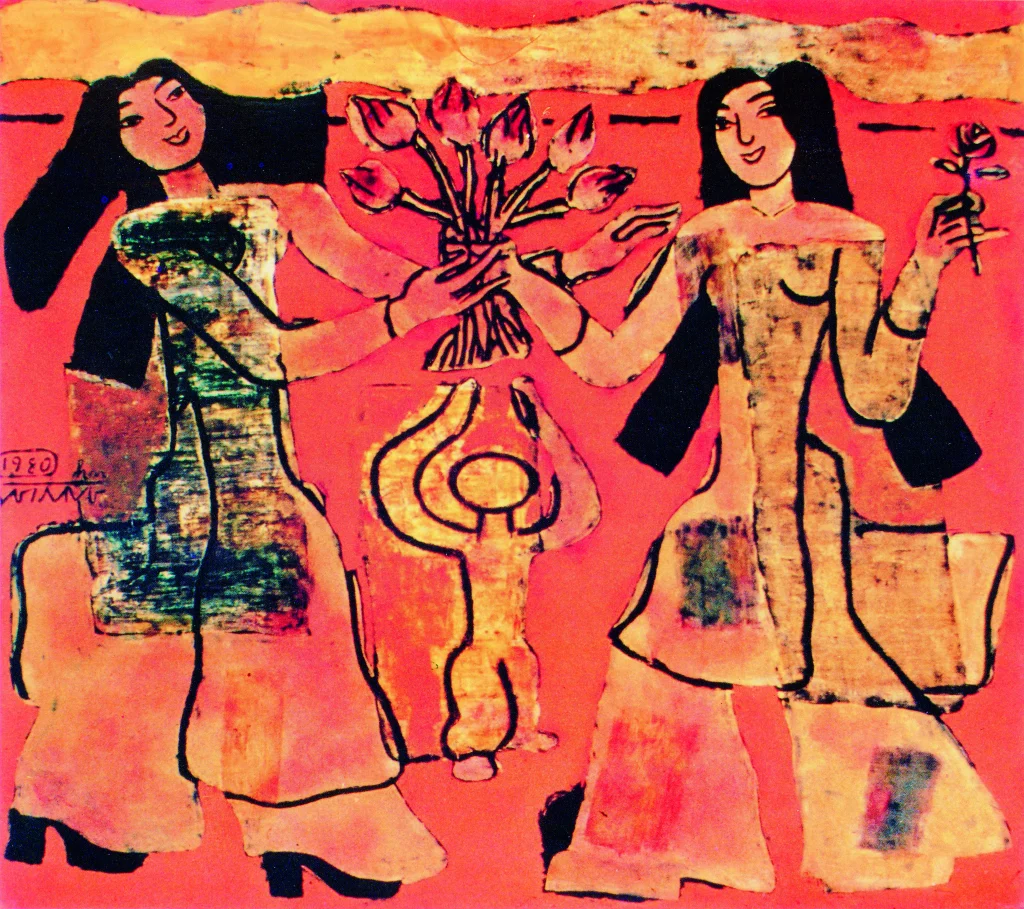
NGUYỄN SÁNG (1923-1988). UNIFICATION. 1980. LACQUER
‘Unification’ is a work with meanings, profound in terms of national stature, patriotism and outstanding painting personality of Nguyễn Sáng. That personality is expressed from the style, the solid, strong shape with decisive, coherent lines – refreshing curves; charming characters – faces, dresses, hair; The decorative details seem to be just supporting, embellishing but are full of romance – lotus, rose and the wit of folk – children’s figures.
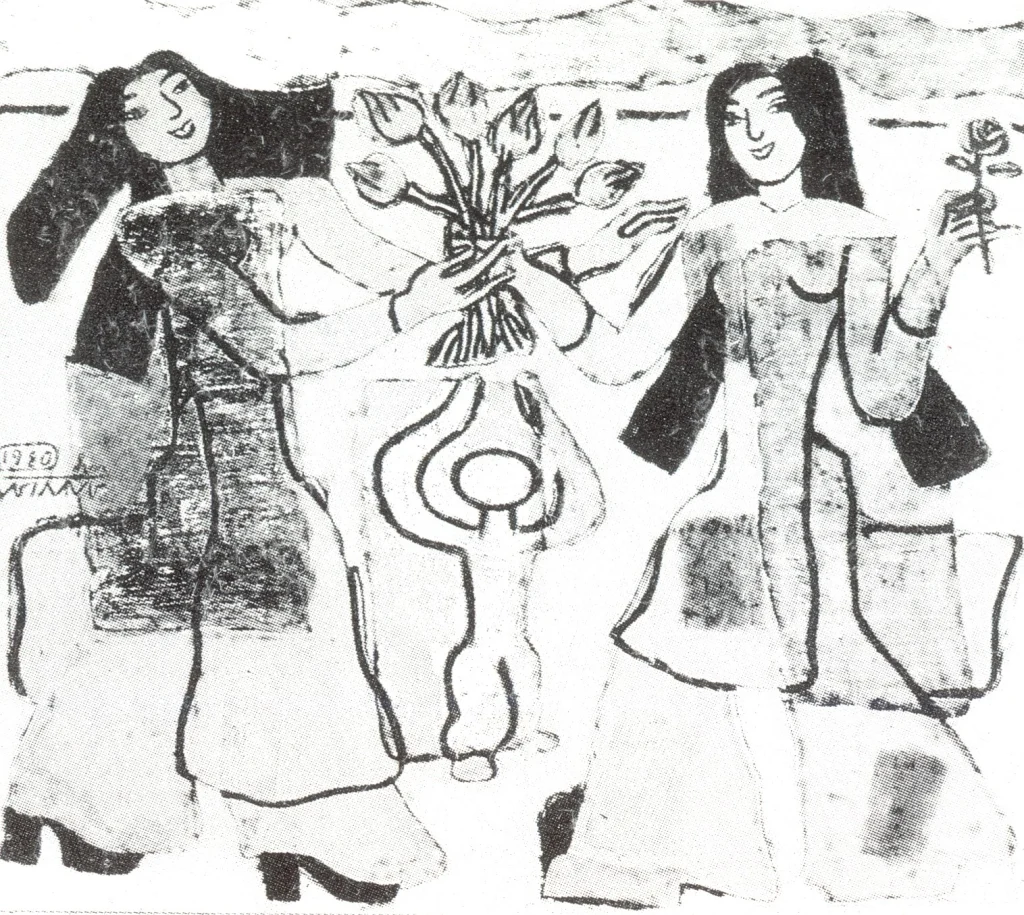
NGUYỄN SÁNG (1923-1988). UNIFICATION PRINTED. 1980. LACQUER
To create a subject with great stature and thought – is very difficult. If the composition is “not enough”, it will create a feeling of “movement”. The artist must be excellent to be able to “convey the spirit – national quality” into the work. In addition to being a skilled artist, Nguyễn Sáng stands out with his wholeheartedness, and determination in artistic creation – a personality associated with his name. This is recognized and respected by both the profession and art lovers. This is also the factor that creates the appeal of his works. Nguyễn Sáng once said: “If it weren’t for art, even if you scattered money all over the road, I would still step on it. But for art, I can pick up coin by coin to live.”
A lifetime of tireless artistic work, full of determination and will to reach the end of the creative path… originated from learning from folk traditions. Nguyễn Sáng is a great monument of Vietnamese revolutionary painting.
WRITTEN BY VIET ART VIEW
COPYRIGHTS BELONG TO VIET ART VIEW


